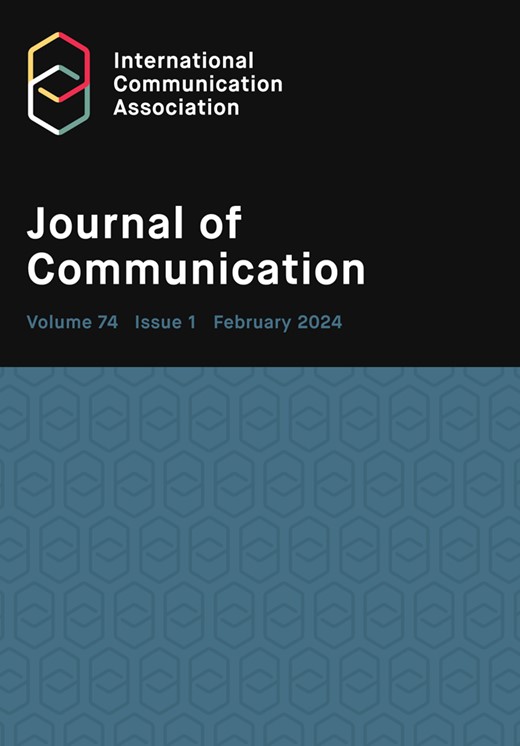制作 LGBTIQ+ 媒体想象中的正常化概念:编剧的观念
IF 5.5
1区 文学
Q1 COMMUNICATION
引用次数: 0
摘要
LGBTIQ+ 群体在电视剧中的表现受到了学术界的高度关注,主要是从文本和接受的角度。然而,媒体内容制作背后的创意和工业流程,包括编剧的观点和经验,仍未得到充分探讨,尤其是在美国和北欧以外地区。本研究借鉴了 "同性恋制作研究"(Queer Production Studies),通过考察西班牙编剧在为电视节目创作虚构的 LGBTIQ+ 角色时的经验和观念,并观察广播行业如何影响这一过程,试图填补同性恋媒体研究中的这一空白。对 19 位西班牙编剧进行了半结构化访谈。根据基于理论的主题分析,主要结果显示,正常化指导着 LGBTIQ+ 角色的创作,尽管编剧们对这一概念的定义存在差异。此外,对 LGBTIQ+ 角色私密生活的叙事阐述成为正常化过程中的主要困境。同样,编剧们也看到了电视行业的矛盾态度:虽然如今加入 LGBTIQ+ 角色似乎是强制性的,但也有人担心这会导致收视率下降,或因负面批评而使声誉受损。这项调查的结果进一步加深了我们对 "正常化 "这一概念如何影响 LGBTIQ+ 媒体形象创作的理解,因为在制作过程中扮演重要角色的专业人士对这一概念有着深刻的认识。这些发现有助于促进 LGBTIQ+ 媒体研究和同性恋媒体表征构建方面的知识发展。这些发现还扩大了制作研究这一探索不足的领域的范围,并使其研究的地理区域多样化。本文章由计算机程序翻译,如有差异,请以英文原文为准。
The concept of normalization in the production of LGBTIQ+ media imaginaries: the scriptwriters’ conceptions
The representation of the LGBTIQ+ community in TV series has received major attention from academia, mostly from textual and reception perspectives. However, the creative and industrial processes behind the production of media content, including the writers’ views and experiences, remain under-explored, especially outside of the United States and Northern Europe. Drawing on Queer Production Studies, this research seeks to fill this gap in Queer Media Studies by examining Spanish screenwriters’ experiences and conceptions regarding the creation of fictional LGBTIQ+ characters for TV shows, and observes how the broadcasting industry influences this process. Semi-structured interviews were conducted with 19 Spanish screenwriters. Following thematic analysis informed by grounded theory, the main results show that normalization guides the creation of LGBTIQ+ characters, although there are differences in the way screenwriters define this concept. Moreover, the narrative exposition of the intimate lives of LGBTIQ+ characters emerges as the main dilemma in that normalization. Likewise, scriptwriters perceive ambivalent attitudes from the TV industry: Whereas the inclusion of LGBTIQ+ characters seems mandatory these days, there are fears that this might lead to low viewing figures or of reputations being tarnished by negative criticism. The results of this investigation further our understanding of how the concept of normalization shapes the creation of LGBTIQ+ media representations as perceived by professionals who play significant roles in their production. These findings contribute to the advancement of knowledge within LGBTIQ+ media studies and the construction of queer media representations. They also expand the scope of the under-explored field of Production Studies and diversify its geographical area of study.
求助全文
通过发布文献求助,成功后即可免费获取论文全文。
去求助
来源期刊

Journal of Communication
COMMUNICATION-
CiteScore
11.60
自引率
5.10%
发文量
41
期刊介绍:
The Journal of Communication, the flagship journal of the International Communication Association, is a vital publication for communication specialists and policymakers alike. Focusing on communication research, practice, policy, and theory, it delivers the latest and most significant findings in communication studies. The journal also includes an extensive book review section and symposia of selected studies on current issues. JoC publishes top-quality scholarship on all aspects of communication, with a particular interest in research that transcends disciplinary and sub-field boundaries.
 求助内容:
求助内容: 应助结果提醒方式:
应助结果提醒方式:


